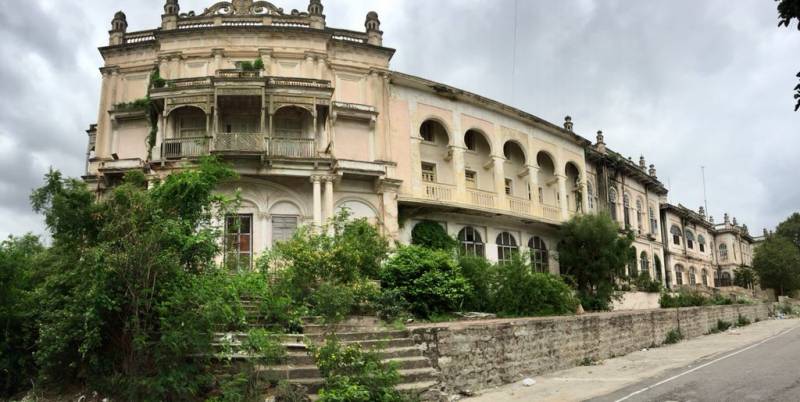The story behind saving Errum Manzil
By Newsmeter Network
Sometime in June, the government dropped a bombshell that it had plans to demolish Errum Manzil to make way for a new assembly. Disturbing as the news was, many of us swung into action raising our voices against the decision. Late evening on June 27, I was shocked to see a news video of Chief Minister K. Chandrasekhar Rao, laying the foundation stone at Errum Manzil. I cannot forget the repulsion, I felt, as I saw the CM wield a crowbar in a symbolic gesture of digging the pit for a foundation.
This was not about a building of brick and mortar, beautiful as it was, being torn down. I felt violated. As the present generation of a family that has considered Hyderabad home for the past 350 years, something deep inside felt violated. It instantly felt like an affront to who we were as Hyderabadis and our very identity as this city's citizens. I realised Errum Manzil like so much else was our legacy. Hyderabad's legacy.
I didn't need to think much to realise that going legal was not the only route to stall the impending doom. The very next day I was on the phone with my classmate from decades ago Ramakant Reddy who was an advocate at the High Court.
He said, “Yes, what do you want to do about it ?”
“We have to stop it,” I said.
“Let's do it,” said Rama
“But we can’t afford it. There’s hardly any money in the trust,” I said.
“Don’t worry Deepak. Just get me what you have on the Nawab and the palace’s history and we’ll get started,” said Rama.
“If we as Hyderabadis don’t do this who will?” Rama quipped.
I took ‘Days of the Beloved’ from our home library and gave it to Rama. He called me late that night saying, “This man was indeed special. Fakhr-ul-Mulk was an amazing person.” We both started discussing the plan of action.
Very early on Rama alerted me, saying Chief Justice Raghavendra Singh Chauhan was a very learned man and that we would have to build a very technical case for him to even take note of our arguments.
Errum Manzil like 136 other monuments was not under the Heritage Act. Regulation 13 which had been repealed by the state meant it was free to do as it pleases.
Every day late in the evening Rama and I would debate these issues over the phone.
Rama kept saying, “Find me a case that sets a precedent. Ideally a Supreme Court case. Where a building unprotected should be saved or had been saved. He was asking me to do research. And I did. Scouring through cases on the internet I started studying other cases and our Constitution.
In frustration, I started researching the HMDA and found that in the masterplan all the registered 13 sites were still listed. The HMDA had gone through a laborious process to enlist the buildings under reg 13 and a Heritage Conservation Committee was in place. A due process was followed. How could then everything be binned by scrapping Reg 13?
I won’t bore you all with intricacies of the precedent cases we used but in a nutshell the sheer brilliance of Rama to scour through the entire gamut of law and precedents, at times even referring to cases from other countries, he finally drafted the written arguments for submission, details of which I will share in a separate post, and asked me to read it. I went through it all only to sit back feeling we had placed a very sound argument before the bench.
Then a disturbing thought arose. By now I was losing my sleep over this case and so was Rama. What if the judge is swayed? The horror of that possibility sent shivers down my spine.
Who was Raghavendra Singh Chauhan? I wanted to know more about him. I started watching his lectures/talks on YouTube and then I came across an amazing speech of his right here in Hyderabad at the Ramkrishna Mission. It was a long long speech almost 40 minutes I think, but, as I watched him speak I realised I was listening to a man who had an upbringing as thorough as myself rooted in values and culture and evident that culture and heritage were at the core of his being. He is a true Indian.
All the arguments had been heard and written accounts submitted. I no longer was worried. We had done a masterful job of arguing the case and we had a brilliant CJ in place who innately understands what culture is and its relevance to society. Deep inside I knew we had nailed the case. I knew Errum Manzil would never get demolished, we just had to wait for the judgment.
After a long lull when the judgment was finally announced yesterday, it bore out the very basic fundamental values that make India a great nation. I am proud to say I am a Hyderabadi. I salute people like Ramakant and Mr O.M. Debara who so selflessly put himself out there to uphold what was deeply essential for our society.
This was a job well done and I am deeply satisfied by the outcome.